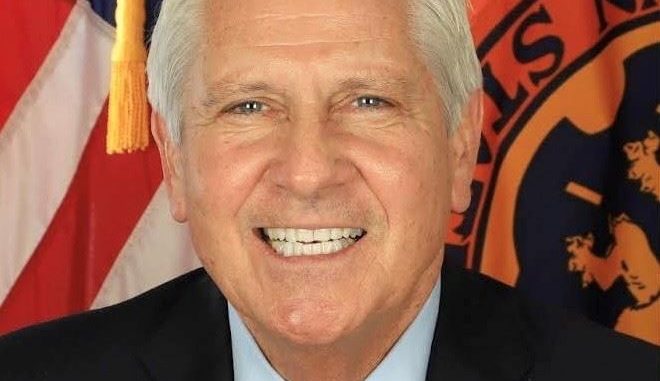
(Photo courtesy of the Office of the County Executive)
Nassau County Executive Bruce Blakeman’s voting member on the MTA Board is David Mack. Any changes to the MTA $51 billion 2020-24 Five Year Capital Plan have to be reviewed and approved by the State Capital Program Review Board (CPRB). The MTA is counting on several billion dollars more out of the $1.2 Trillion Build Back America Infrastructure bill. These dollars and projects will have to adopted and amended into the ongoing Five Year Capital Plan in the next two years.
This four-member committee is composed of one representative appointed by Governor Hochul, Senate Majority leader Andrea Stewart Cousins, Assembly Speaker Carl Heastie and New York City Mayor Eric Adams. The mayor’s representative can only vote on New York City projects. Democrats control all four votes. Blakeman must insist that members of the Nassau County State Assembly and State Senate work with the MTA CPRB to insure that the county receive its fair share of funding.
The federal planning process to access Federal Transit Administration funding is managed by the New York Metropolitan Transportation Council (NYMTC). Nassau County along with the New York City Department of Transportation (NYCDOT) Commissioner, New York City Department of Planning, MTA, Suffolk County, Putnam County, Rockland County, Westchester County and State Department of Transportation each have one vote. NYMTC will decide in coming months how almost $2 billion in FTA formula funding and billions more in Federal Highway Administration (FTA) funding will be distributed among the voting members. They also vote on adopting the annual federal required Transportation Improvement Program (TIP). All transportation agency transit and highway projects including those from Nassau County must be included on the approved TIP and any TIP amendments. It is one of many legal requirements before federal funding can be approved for a transit or highway project.
FTA recipients such as Nassau County can also choose to spend whatever they receive under their share of federal Fiscal Year 2022 Section 5307 Urbanized Area $6.4 billion; 5339 Bus and Bus Facilities $601 million and Section 5310 Enhanced Mobility of Seniors & Individuals With Disabilities $422 million. Nassau County can also apply for grants under various national discretionary competitive FTA grant programs. This includes Section 5339 Bus and Bus Facilities $546 million, Section 5339(c) Low or No Emissions $1.1 billion, Transit Oriented Development Planning $13 million and Pilot Program for Innovative Coordinated Access Mobility $4.6 million.. Nassau County needs to convince the MTA to apply for grants under various national competitive grant programs that can benefit LIRR commuters. This includes Section 5337 State of Good Repair Replacement $300 million and Capital Investment New Starts or Core Capacity grants $3.8 billion. The Federal Highway Administration has funding under several programs including Congestion Mitigation Air Quality (CMAQ), Surface Transportation Program (STP) and others which can be flexed or transferred to FTA can also finance capital projects.
Nassau County can also apply for capital grants from the state Department of Transportation to assist in funding. Albany also provides State Transportation Operating Assistance (STOA). Ridership on any transit service generates yearly federal transportation capital assistance via the annual FTA Section 15 annual reporting process. Nassau Inter County Express (NICE) Bus could not financially survive without government subsidy. MTA LIRR, NICE Bus and City of Long Beach Bus are subsidized by a combination of town, county, state and federal assistance for both capital and operating costs.
Reducing the wait time for a LIRR train or NICE Bus by expansion of service involves running equipment more frequently. This requires additional capital investments and operating assistance to offset costs. .
Blakeman must insure that his voting representatives at NYMTC and MTA along with the Congressional and State Legislative delegations make sure that Nassau County receives a fair share for all the federal and state formula and competitive discretionary funding available for transit. Residents, commuters and taxpayers should expect nothing less.
Larry Penner is a transportation advocate, historian and writer, who previously worked for the Federal Transit Administration Region 2 New York Office. This included the development, review, approval and oversight for billions in capital projects and programs for the MTA, NYC Transit, Long Island Rail Road, Metro North Rail Road, MTA Bus along with 30 other transit agencies in NY & NJ.

